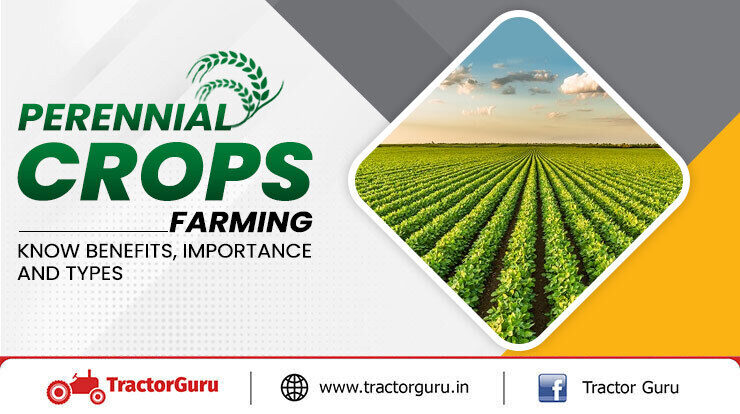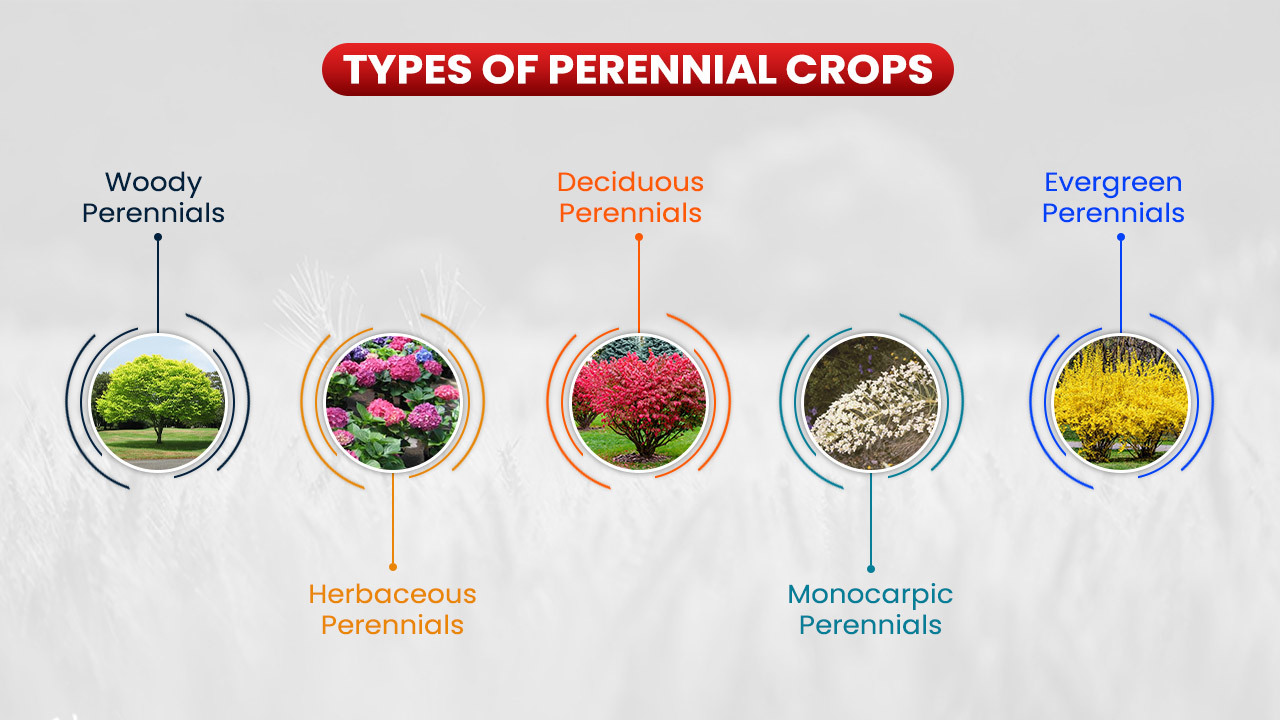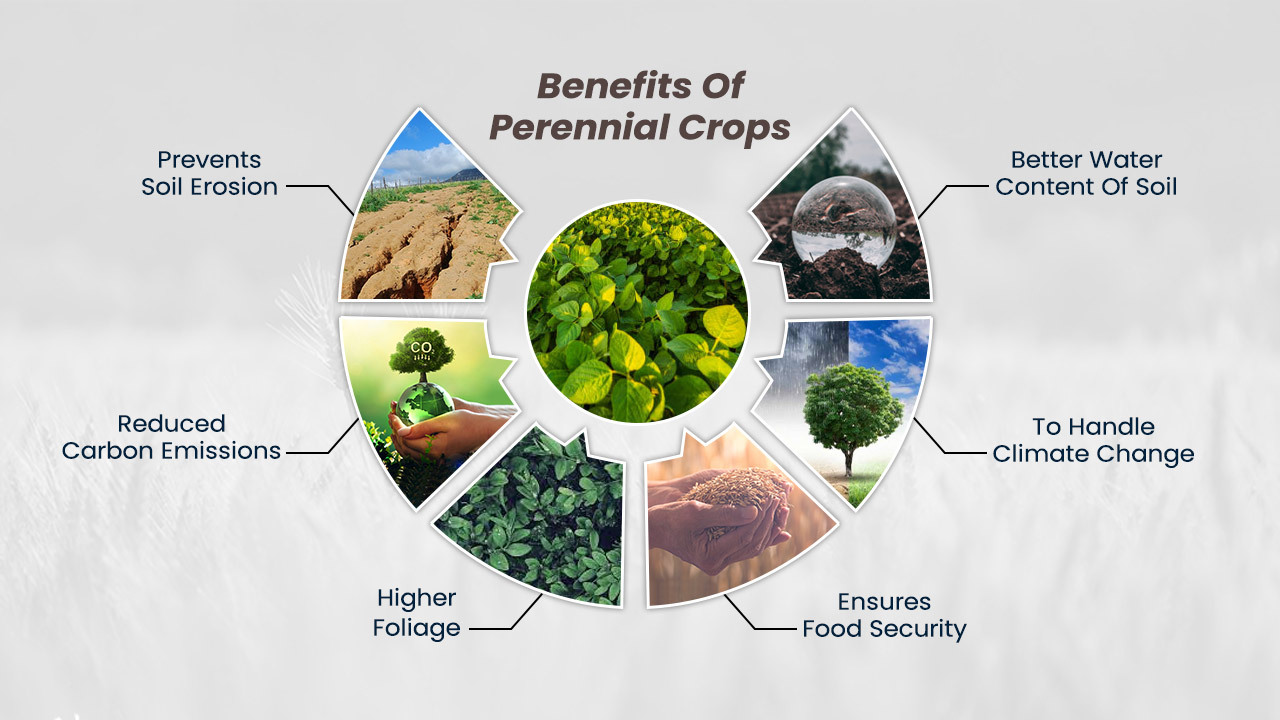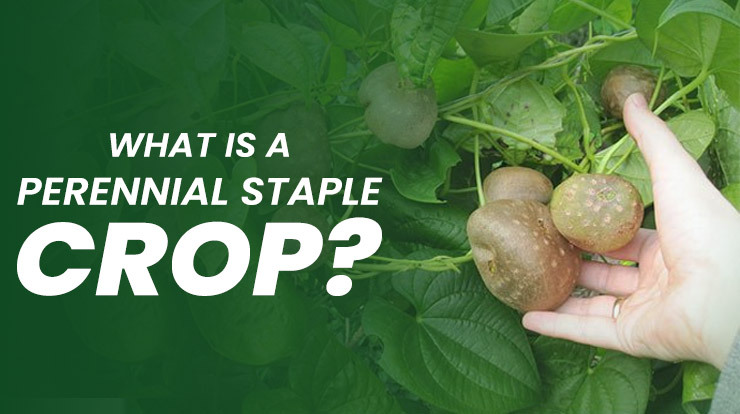Perennial Crops Farming – Know Benefits, Importance And Types

Modern agriculture has helped the farmers’ community achieve a higher yield quality. In addition, various technological advancements have been introduced for cost-efficient farming. However, in this modern era, we should also remember that traditional and modern farming techniques help generate profitable income. Therefore, we are describing a beneficial type of crop known as Perennial Crops.
What Are Perennial Crops?
Perennial crops describe those crops which we can harvest once a year. Moreover, these crops do not need to be planted every time after harvesting. And the life of these plants is more than two years. Therefore, a large number of crops come under the category of Perennial. This means these crops can accomplish the scope of growing a profitable crop. It is because many nuts and fruits are naturally Perennial. Hence, the importance of perennial crops farming is significantly high to generate a cost-effective income.
Moreover, chrysanthemums, columbines, larkspurs and primroses are some herbaceous plants which are examples of perennials. Therefore, to contribute to a nation’s gross crop production, Perennial crops have an essential role.
Perennial Crop Farming History
For the fruiting crops, the history of the first perennial agriculture goes back 11,000 years. The human species of that era knew the benefits of this cropping system. Although, those humans had to stay at a particular location due to the advantageous crop cycles of those areas. This caused a major effect on the civilisation, as they became limited to a specific location.
Types Of Perennial Crops

- Woody Perennials
- Herbaceous Perennials
- Deciduous Perennials
- Monocarpic Perennials
- Evergreen Perennials
Among the wide variety of crops, five types of Perennial crops are the most popular. These five types of perennial crops farming are given below:-
-
Woody Perennials
These crops are defined as trees, vines or shrubs which have a life expectancy of more than one year. Apart from these, Woody perennial plants comprise a stiff structure to provide support throughout their life.
-
Herbaceous Perennials
This type of perennial crop dies every year, but its roots stay alive, and they help to generate new plant tops. Along with this, Herbaceous crops are also popular as perennial horticultural crops. This is because they mainly consist of decorative plants. Also, these crops do not have persistent woody stems above the ground.
-
Deciduous Perennials
These perennial crops seasonally lose their stems or leaves. And this loss is the result of proper water availability. However, some of these crops are also semi-deciduous. This means that they lose some part of themselves, but not completely. Apart from this, Herbaceous and Woody Perennials come under Deciduous Perennials.
-
Monocarpic Perennials
In this type of Perennial crop, plants flower only once a year. Then, these plants start to produce perennial fruit crops and vegetables. And after that, their life cycle completes, and they die. Furthermore, all of the biennial and annual plants are Monocarpic Perennials.
-
Evergreen Perennials
Evergreen Perennials are those plants that have foliage throughout the cold winter months. Therefore, unlike other plants, these crops can withstand harsh winter conditions. This leads to profitable crop production. Hence, this produces one of the most crucial perennial food crops.
Benefits Of Perennial Crops

- Prevents Soil Erosion
- Better Water-Content Of Soil
- Reduced Carbon Emissions
- To Handle Climate Change
- Higher Foliage
- Ensures Food Security
Perennial Crops have a ton of value for the farming sector. Below are some of the Perennial crops benefits.
- Perennial crops reduce soil erosion as the topmost layer of the soil is covered with plants. Therefore, the soil is less prone to damaging winds and excessive rainfall.
- These crops have longer roots, which go deep into the soil. This leads to a better water-holding capacity of the soil.
- Perennial crops use a high amount of carbon throughout their life cycle. And carbon emissions are re-utilised, resulting in a better environment.
- They also help reduce climate change’s negative effects, as Perennials can thrive in some of the toughest environments.
- They also provide a better canopy because they have denser leaves. This results in a high-quality yield.
- We can grow perennial crops for food security due to sufficient yields.
Perennial farming boosts soil fertility and helps to prevent water from escaping the soil. However, this agriculture is different from traditional farming techniques. This is due to less output. Apart from this, Perennial farming crops have a deeper root system, which holds the soil and provides nutrients to it. Therefore, it acts as a preventive measure for the environment.
What Is A Perennial Staple Crop?

Perennial Staple crops are those Perennial crops which are obtained to fulfil the survival needs of a large population. Therefore, these crops contain high amounts of carbohydrates, fat and protein. Staple crops ensure that our body gets proper nutrition in order to stay fit. However, the staple crop production from Perennial plants is significantly less due to improper growing conditions.
How To Improve Perennial Staple Crop Production
The primary reason behind the lesser cultivation of staple Perennial crops is less popularity. And a large part of the world’s population depends on annual crops, including oilseeds, grains, tubers and other fruits and vegetables.
Moreover, if we want to switch to Perennial staple harvesting, the first challenge is to make every area suitable for such crops. Next, we must adopt modern farming techniques, such as the latest tractors and farm implements. Apart from this, numerous campaigns and programs should be carried out to gather funds for effective production. These steps will immensely result in the higher growth of perennial crops. And the dependency on annual crops will reduce, leading to better soil fertility.
Perennial Crops By Climatic Conditions
-
For Arid Or Semi-Arid Regions
The crops grown in these water-deficient areas include mesquite pods and date palms. These Perennial crops are rich in Carbohydrates. However, other protein crops such as buffalo gourd seed, moringa, lima beans and other nuts can also be grown. This is because they can withstand challenging drought conditions.
-
For Lowland Humid Tropic Regions
These areas help to produce starchy crops, such as the best perennial fruits and vegetables. Examples of perennial crops in this area include air potato and Tahitian chestnut, which give a higher output. Some Perennial oilseed crops are also suitable for these areas. And protein-rich Perennial crops are unavailable in humid lowland regions.
-
For Highland Tropic Regions
Highland Tropics are famous for their unique bean crops. The best perennial vegetables include runner beans and chachafruto trees. Also, the lucuma fruit is one of the popular highland tropical perennial foods. Moreover, these areas are ideal for delivering high-quality crops. Apart from this, we have the option for numerous perennial vegetables to grow with ease.
-
For Cold Temperature Regions
In these areas, there is minimal production of perennial staple crops. Hazelnut, a rich source of protein, is grown very popularly in colder areas. However, the cultivation of Perennial grain crops is increasing, and various technological advancements are introduced to grow staple crops easily in colder conditions.
-
For Mediterranean Regions
These areas are suitable for cultivating carbohydrate crops, such as carob, chestnuts and dates. Avocado, pistachio and almond are the perennial crops examples of these regions. In addition, Mediterranean regions are the only places where oak trees are cultivated as a fully functional Perennial crop.
Perennial Crops In India
There is not much awareness in India regarding the cultivation of Perennial crops. However, India is a major agricultural-dependent nation, but the farmers are limited to traditional farming methods. Therefore, it is difficult for them to adapt to modern farming practices. Furthermore, the Indian farming community also compares annual vs perennial crops. And the difference between annual and Perennial crops will help to find out which is better. We know both farming methods have their merits, but Perennial crops also help the planet. Therefore, we need to bring out the potential of Perennial crop cultivation in India.
Types Of Perennial Vegetables
All over the world, farmers are adapting modern ways to reduce carbon emissions and soil erosion. Hence, the production of different Perennial vegetables is crucial, and we are giving you a list of the top 10 perennial vegetables for profit.
These are the best edible Perennial vegetables we can cultivate to achieve higher profits.
- Rhubarb
- Asparagus
- Broccoli
- Spinach
- Watercress
- Yam
- Horseradish
- Artichoke
- Chives
- Sorrel
We can easily grow the above-mentioned perennial vegetable crops to balance nature and obtain higher yields. Apart from this Perennial vegetables list, numerous other tropical perennial vegetables are also available.
The Final Thought
In this way, we have given you detailed information regarding what are perennial crops, benefits related to growing of perennial crops, and a list of hardy perennial vegetables. Moreover, there are tons of technological advancements in the farming sector to maximise farm productivity. Also, this article will help you solve all your queries related to Perennial crops. If you want more such agriculture-related blogs and updates, stay tuned with Tractor Guru.
Related Blogs



